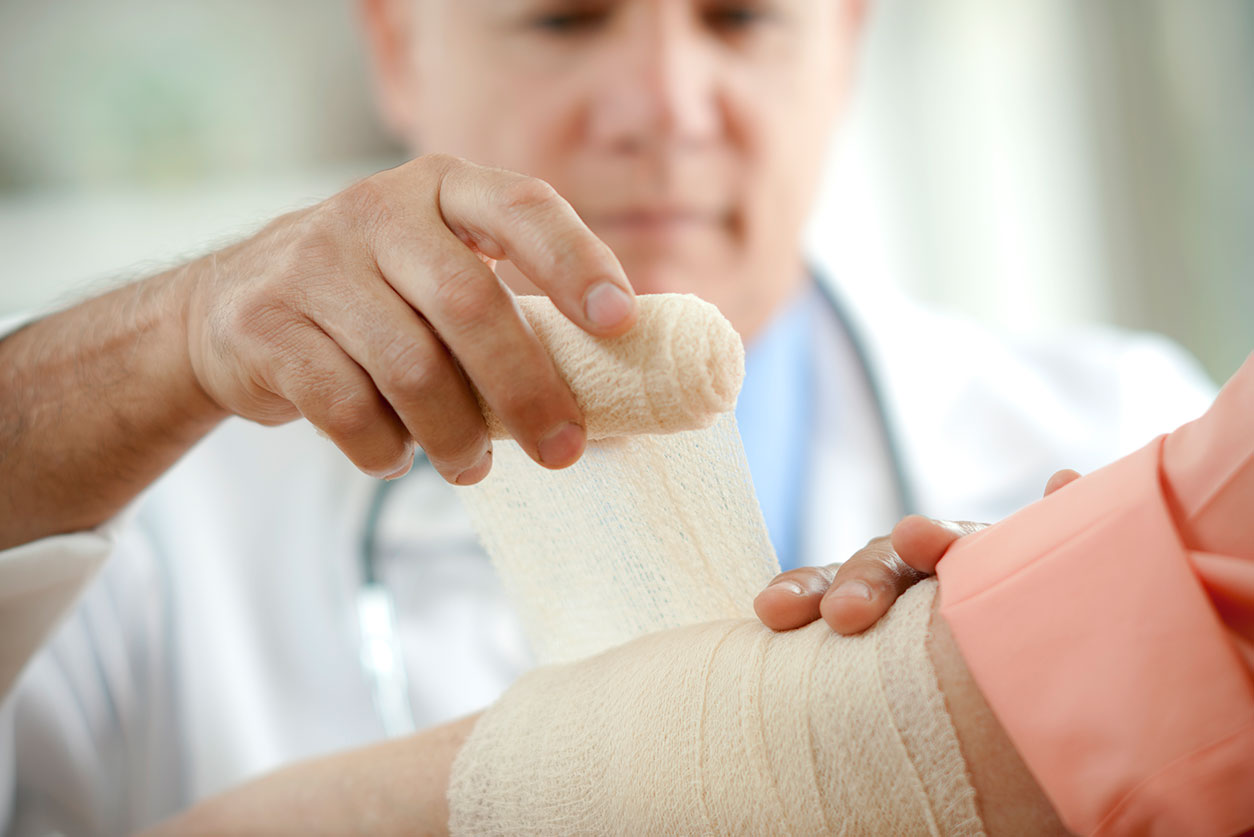Have you ever cut your hand while cutting fruits or vegetables? That cut or opening may be followed by bleeding or in some cases severe pain at the affected area.
This kind of injury is called a laceration.
What is a laceration repair?
A laceration is one type of a wound. It is a cut or opening that is formed by the tearing of the soft tissues, typically by some sharp object. A lacerated wound is at times contaminated with debris or bacteria from the object that caused the cut.
Laceration repair is the process of cleaning, preparing, and closing the wound to prevent it from getting infected and to promote healing. Laceration repair is required when fat, muscles, or bones are exposed, wounds have jagged edges, or when the bleeding does not stop even after applying pressure for 10 or 15 minutes.
Causes
Lacerations are very common in daily life and are typically caused by injuries with a sharp object, like knives or scissors. Lacerations can occur on any part of the body. In most cases tissue injury is minimal and does not lead to infection.
Symptoms
The most obvious symptoms of laceration include:
- Bleeding
- Gap or opening in the skin tissues
- Pain surrounding the injured area
Treatment options
The treatment of lacerations depends on the cause, type, and the depth of the wound, as well as whether other structures beyond the skin are involved.
Sutures
Sutures, or in common language stitches, are usually performed for wounds that are deep, bleeding heavily, or have jagged edges. Before suturing the affected area, an antibiotic cleanser is first applied to clean the area. The area will then typically be numbed with medication before the wound is sutured together. There are multiple methods for suturing a wound. Your medical provider can determine the best way to close the wound. After suturing, bandages will be applied and instructions on follow-up care provided.
Dermabond
Dermabond is another way to repair a laceration. This is a special glue which holds the wound edges together. This skin glue can be used on the face, arms, legs, and torso. Skin glue is not used on lips, joints, deep cuts or for most hand and foot lacerations. Dermabond comes off on its own in 5-10 days.
Steristrips
Steristrips are adhesive tapes which close wounds that are shallow with clean edges. Steristrips fall off on their own after 5-10 days when the wound should be effectively healed.
Follow-up Care
After returning home, follow-up care is extremely important. In order to ensure smooth recovery, the following things should be done:
- Avoid any strenuous activity for at least 3-5 days
- Take antibiotics or pain-relieving medicines, if any, as instructed by the healthcare professional
- Do not touch the dressing or scratch the wound
- Do not soak your hand in water
Contact us
In case of urgent medical care assistance, AfterOurs Urgent Care offers immediate telemedicine services, where medical providers are available to offer assistance. Anyone who experiences signs and symptoms requiring urgent medical attention can simply book their appointment with AfterOurs Urgent Care to directly talk to an expert. If your medical issue is not appropriate for telemedicine, we will let you know and refer you to an in-person facility.
When to visit a doctor:
If you have a wound that shows signs of infection or will not stop bleeding, you should see a medical professional for follow up.
Treatment for lacerations is available at AfterOurs Urgent Care.

